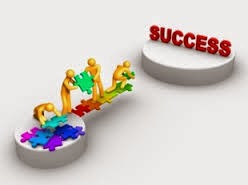Chapter 10
SMALL GROUP
- is interpersonal communication within groups of between 3 and 20 individuals.
- helping behaviors and information-sharing causes groups to be superior to the average individual in terms of the quality of decisions and effectiveness of decisions made or actions taken
- Purpose: have a same purpose and reason.
- Interdependence: describes relationships in which members of the group are mutually dependent on the others or to complement each other.
- Organization of rules : that have their certain schemata/rule to adhere to.
- Self-perception as a group : that have their common shared values, beliefs, likings and mentality.
•Specific purpose : problem solving , set a goal.
•Clearly defined roles : have a gruop leader, every team member must be a player.
•Goal directed : achieve
the common goal and
objective.
Content focused : must
be able to generate content- not distracted
by other things.Small Group State
- opening
- Feedforward
- Business
- Feedback
- Closing
SMALL GROUP FORMAT
The round table
- Share information together
- Leader – try to keep members on track
The
panel
- Group members are experts
- The most popular small group formats.
The
Symposium
- Each member delivers a prepared presentation much like a public speech.
- speeches – different aspect of a single topic
- ‘Power refers to our ability to influence another person’s behavior. There are five different types:
- Legitimate power: power because of your position or role
- Referent power: power because people like you
- Expert power: power because you have specific knowledge
- Reward power: power by granting others rewards
- Coercive power: power by inflicting punishment
Types of Groups and Teams
- ‘Primary group—fulfills the basic human needs of
associating with others( Family Unit)
- ‘Study group—meets to learn new ideas
- ‘Therapy group—provides treatment for the personal issues group members have
- ‘Problem-solving group—exists to resolve an issue or work out a problem
- ‘Focus group—people asked to discuss a particular topic or issue and provide feedback
- ‘Social group—exists just for the joy and satisfaction of group members
Idea-generation groups
- the creative process of generating, developing, and communicating new ideas
Personal Growth Groups
aim to help members cope with particular difficulties
1.The Encounter Group: “sensitivity group”
- this group try to facilitate members
- more on psychotherapy
2.The assertiveness training group:
- aims to increase the willingness of its
members to stand up for their right and to act more assertively in a wide variety
of situations.
3)
The Consciousness – raising group:
aim to
help people cope with the problems society
confronts them with.
The Six Thinking Hats (or modes)
 |
The White Hat
The White hat calls for information known or needed.
 |
 |
 |
 |
 |






No comments:
Post a Comment